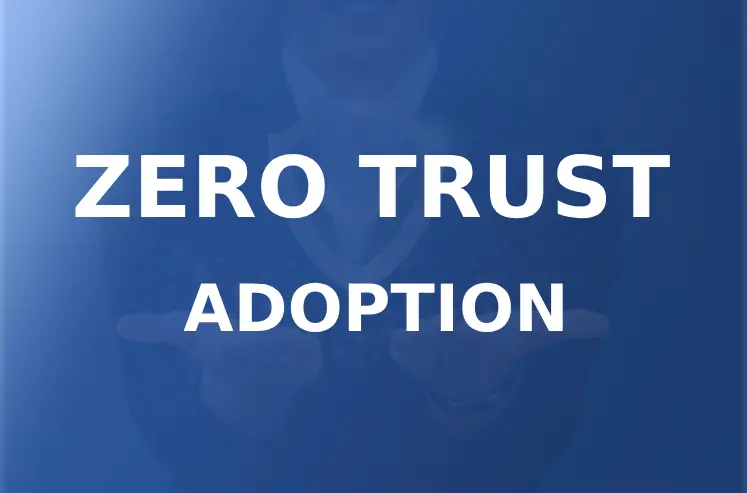Many companies are investing in cutting-edge digital technologies to empower their staff and transform them into cutting-edge organizations ready for future expansion. To fulfill this goal, nevertheless, many organizations’ staff members require additional experience. Because of this, IT outsourcing has continually been a common decision and a useful route for corporate expansion.
Companies all around the world are investing more money in IT outsourcing as they understand they need to change to remain competitive in the digital era. As a result, the price of outsourcing IT has lately gone up. When businesses attempt to leverage cutting-edge tools like big data, managed cloud services, and AI, this will only become worse.
Making sure clients understand how to utilize your technology is considerably different from simply selling it to them. To execute your products and have a quicker time to value, your clients might leverage managed and professional services. The ideal choice for individuals who are expressly outsourcing their IT is still up for debate: managed services vs professional services.
Avoid pitting managed and expert organizing services against one another. They are as important to a company’s success even if they will be implemented differently, and they can even be combined to produce outcomes. Both can be utilized successfully to boost client satisfaction and repurchase rates.
Although managed and professional services are closely connected, it’s important to understand how they vary. Your internal teams will be led by qualified managed services, who will also handle any needs you may have for your firm. Furthermore, many firms may benefit from one or both services, so understanding which one to employ and when is beneficial.
It is essential to know what to look for in a managed services provider and an IT professional organizing services provider. So without further ado, let’s compare managed services to professional services.
What are Managed Services?

Managed IT services help organizations with the continuing management, maintenance, and regular operation of their IT needs. Naturally, it would direct you if you had access to technology in the present, the future, and all points in between. With managed services, you can be confident that your IT will always help you achieve your business goals.
Managed service providers free up your clients’ time to focus more on their distinctive business areas in exchange for taking on part of their tasks. These expert organizing services provide a wide range of features and options, including as network monitoring, 24/7 IT support, managed cloud services, data backups, cybersecurity, and more.
Their main source of income, if not their exclusive one, comes from management services companies. MSPs are usually evaluated on certain KPIs connected to the operational area, and controlling the cost of the delivery team to fulfill internal financial goals is a significant source of motivation. With a focus on operational management, this is done under yearly or multi-year contracts. Faster reaction times, help for data compliance and security, predictable and scalable expenditure, and more are some advantages of managed IT services.
Managed services provide managed XaaS and monitor, operate, optimize, and transform. With the broad range of services offered by managed service providers, firms that provide contract management services may find all the essential monitoring services. Many types likely exist among your managed service solutions. And they were subject to your client’s requirements. Your team will consequently function in various ways.
These five groups make up the managed services continuum. In our report, the offer continuum’s workings are covered in more detail. Initially, define managed services; however, a stepladder analogy can also be used. Managed services have a number of benefits, including predictable low costs, data compliance, round-the-clock support, scalability, and more.
Clients that cooperate with a managed services team may more effectively realize the value of their technology investment. Management services firms employ a proactive, preventative, predictive, and prescriptive strategy to guarantee that customers accomplish their goals.
What are Professional Services?

Professional service providers are made up of qualified professionals with in-depth knowledge of a certain subject. Professional services might be useful in this situation because technology solutions can be quite complicated and require skills to fully understand them.
Professional service automation gives you the information you need to make sure your customers get the most out of their purchases. This could be offering a free initial consultation after a purchase, being there for clients as they go through the onboarding process, and taking additional measures to ensure product uptake.
Many different types of technology solutions can be implemented with the help of a professional services team, such as
- Resource management
- Migration
- Performance, tuning, and optimization improvements
- Systems Integration
- Custom development
- Adoption
- Design
- Implementation
- Project and program management
- Consulting
These services are a perfect example of how professional services are project-based since they are usually added to a particular project to help customers accomplish a certain goal.
Professional service automation may look and function differently from company to organization. The most important thing to keep in mind is that your charter strategy should appear first in all drafts of your professional services plan. From there, you may develop, promote, and provide to your clients offerings that meet their wants and aid in the growth of your company.
to effectively undertake challenging business or technology transformation projects that will benefit their firm. Clients usually want specialized services. Professional services organizations’ structures could also alter. We break these into two distinct models, each with different requirements for the company:
1. Pure Play Services Business
independent professionals that offer clients consultation and other reimbursable services. Their primary source of income, if not their exclusive one, is professional services automation.
2. Organization for Embedded Services
Professional services automation IT solution providers are a subset of a bigger production organization. Their primary objective is often to make online purchasing for their customers more enjoyable.
Difference Between Managed Services Vs Professional Services
The key business problems of each market sector may be utilized to contrast managed services automation with professional services automation. Managed services companies and professional services companies both confront three major difficulties today.
These are the principal challenges that managed services firms face:
- Retention
- Profitability
- Growth
However, there are a few difficulties that professional services companies must overcome:
- Services Engineering Optimization
- Business Model Optimization
- Resource Management
All parts must boost the profitability of the company, but because of their different business structures, different approaches are required.
Managed services businesses, like SaaS software suppliers, must retain and renew current service subscriptions and give delivery optimization priority. Moreover, automation may cut expenses and increase profitability.
Professional services firms must constantly optimize the utilization of their resources to reduce reworks later in the delivery cycle. To do this, businesses must appropriately architect their solutions from the beginning and ensure that the appropriate person with the appropriate talents is accessible at the appropriate moment.
IT solutions for professional services organizations are undergoing a transformation thanks to the shift to subscription and outcome-based business models, which link their business models with recurring income and value-driven solutions.
The distinctions between managed and professional services could be something you already know. Yet it’s important to understand how such disparities affect a wider range of issues.
-
Implementation vs Adoption
Team professional services provide your customer with the tools they need to handle technology more efficiently, which is the most obvious difference. On the other hand, companies that offer managed services solutions are in charge of managing everyday consumption.
To teach your staff members about a new accounting program, for instance, you may engage a professional service firm. The clients will manage and utilize the accounting software, despite the fact that many professional service providers offer problem-solving sessions and ongoing training. Managed services firms, however, would handle the instrument continually. The amount of participation provided by managed services solutions will vary depending on where your offers fit on the offer continuum.
-
Set Scope vs Continuous
The project’s duration and scope represent another noteworthy variance. The range of activities that may be covered by managed service packages is often not restricted to a single, short-term project. They deal with every element necessary to fulfill an organization’s everyday needs, including finding solutions for future unanticipated issues. The service is also ongoing during the length of the contract, which is typically many years.
In contrast to team professional services, which normally have a more defined scope of work and a specified timeframe for project completion, this is not the norm. Even if some tasks are large and take a while, experts are hired for that specific job. Afterward, they work with you to complete the project or address a specific issue before delivering it to the customer.
This is why it’s important to be clear about the offer’s inclusions when talking about team professional services. You don’t want your consumer to encounter an issue that is covered by the offer only to be astonished when they learn they must pay more to get it fixed.
-
Outside vs Inside
Although managed services solutions are in charge of overseeing daily tech operations, professional services step in to give expertise for a specific project. Despite the fact that we brought it up, it’s important to take into account how it could change how a provider promotes their service offerings in the market.
A managed services provider (MSP) commonly takes on duties that a business normally completes on its own. They “own” a role or duty within the customer’s company and are incorporated into its daily structure and process. Due to the continuity of their labor over the duration of the contract, they are viewed as a more permanent “part of the team”.
Think of their role as being more analogous to that of an external consultant for IT solutions for professional services. They are hired to complete a certain task, then let go after it is complete. Despite the fact that many employees surely engage with professionals who provide services, they only do so sometimes or permanently. If a continuing subscription component is offered, it will depend on the scope of the professional services offered. Yet, it won’t require ongoing maintenance or administration.
Key Takeaways
Managed and professional IT services are essential for businesses in today’s society. Managed IT services entail the ongoing management and upkeep of IT technology as opposed to professional IT services, which require a one-time undertaking. Examining the two outsourcing strategies, it becomes clear that they are crucial to a company’s success and that the needs and requirements will determine how they should be applied.
How do I choose between professional services and managed services? Making the optimal choice requires first having a thorough understanding of the IT challenges facing your business. Often businesses will pinpoint a particular issue that requires quick attention; this calls for specialized IT services.
Always keep in mind the compatibility of managed services and professional services. As a result, more effective marketing can lead to increased rates of consumption, adoption, and renewal.
By hiring ITAdOn as your Managed IT Services Provider, you gain the freedom to focus on your core business reducing the IT Burden & Stress. So what are you waiting for? Call us today!







Great explanation on the differences between managed services and professional services. It really helped my businesses choose the right type of IT support ?!